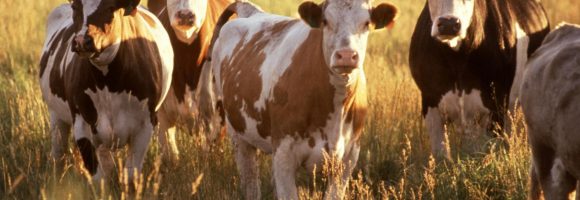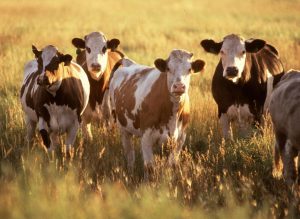Recognizing Common Bovine Diseases

The Last Ride Arizona discusses Recognizing Common Bovine Diseases when caring for your herd.
Caring for cows requires more than simply feeding them properly and providing them with the necessary shelter. It also involves being aware of the common bovine diseases they can catch and how you can prevent these diseases from occurring. To that end, here is a look at some of the most common diseases occurring in cattle.
Bovine Respiratory Disease Complex (BRDC)
Also referred to as “Shipping Fever,” Bovine Respiratory Disease Complex (BRDC) is a type of pneumonia that develops in shipped or stressed calves. A number of different factors can contribute to its development, including weaning, weather change and dehorning, all of which can make the bovine more susceptible to the viruses and bacteria that cause the disease.
The risk of developing BRDC can be reduced through proper handling and by maintaining sanitary conditions. Routine vaccination also helps reduce the risk of BRDC. Vaccinations should be provided while the cow is still young, as calves that survive the disease typically do not grow as quickly or as to as big of a size as those that are not affected.
The Last Ride Recommends Total Supplements Equine
For your Horse’s and Cattle’s Health
Bovine Respiratory Syncytial Virus (BRSV)
Bovine Respiratory Syncytial Virus (BRSV) is a stress-related infection that is sometimes fatal. The disease can cause mild to severe respiratory disease and may also reduce the animal’s resistance to other diseases. Signs of BRSV include high fever, coughing and runny eyes and nose.
Bovine Viral Diarrhea (BVD)
One of the most costly diseases of cattle, Bovine Viral Diarrhea (BVD) is typically characterized by nasal discharge, scours, fever and coughing. Type 2 BVD, which is the more severe form of this disease, can lead to hemorrhaging in both young calves and adults.
Clostridial Diseases
Also known as “Blackleg,” Clostridial Disease is caused by a bacterial infection. While there are more than 60 different types of clostridial bacteria, not all of them cause the disease. Usually occurring in calves or young cattle that are less than two-years-old, this common bovine diseases is most frequently caused by a gangrene that forms in the muscles. Those calves that did not get the proper amount of colostrum are the most susceptible to the disease, though it can also occur in older cattle with the most common cause being vaccine needle contamination.
Haemophilus Somnus
Haemphilus Somnus is a bacaterial infection that can be either the primary cause of a respiratory disease or the underlying infection that is masked by other disease-causing agents. Implicated in a variety of neurological, respiratory and reproductive disorders, Haemophilus Somnus is characterized by labored breathing, nasal discharge, fever and coughing. In some cases, death can occur without any symptoms developing.
Infectious Bovine Rhinotracheitis (IBR)
Also referred to as “Red Nose,” Infectious Bovine Rhinotracheitis is a highly contagious virus that can cause respiratory disease. Signs of the condition include loss of appetite, rapid breathing, deep cough, fever and inflamed nasal passages.
Even with the best care and treatment, there may come a time when you unexpectedly lose one of your cattle and need it to be removed from your property. When this occurs, you can trust The Last Ride to remove the carcass in an efficient and respectful manner. Contact us to learn more about our services.
